If you’ve seen videos on the Internet advertising footage of insanely large animal specimens, then what you’re seeing is likely an example of indeterminate growth left to its own devices. Indeterminate growth refers to the function wherein an animal or creature continues to grow throughout its lifetime. The most obvious example of indeterminate growers are trees, particularly the giant redwoods or bristlecone pines of North America. These massive trees never stop growing and can reach hundreds of feet high so long as they have adequate space to grow. In addition to trees, there exist a number of animals that never stop growing. Generally, reptiles, fish, and amphibians most frequently rank among the list of indeterminate growers, but several mammals also make the cut. Without further ado, here is a list of 10 animals that never stop growing.
#10: Lobster
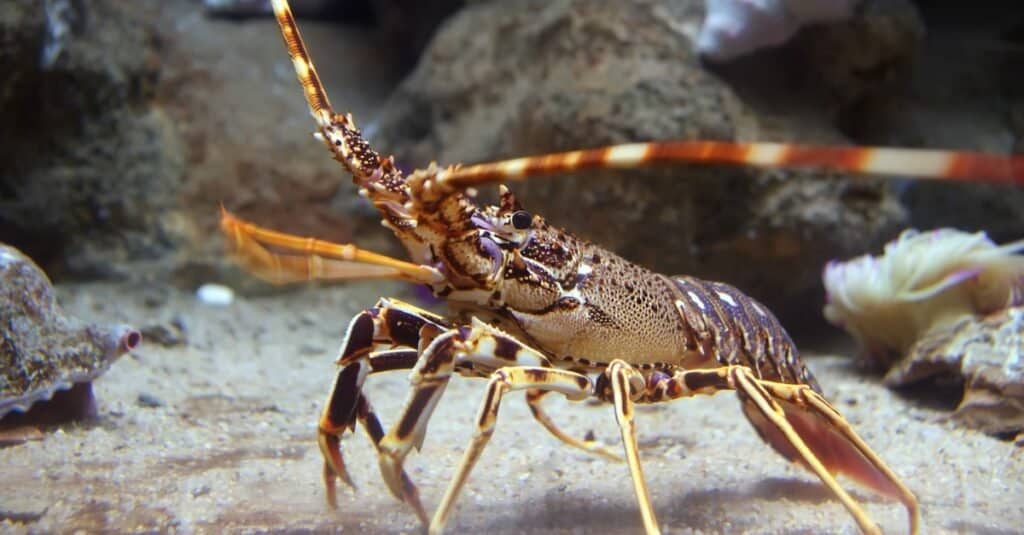
Lobsters can live up to 50 years in the wild, and continue to molt throughout their lives.
©VLADJ55/Shutterstock.com
Lobsters rank among the most well-known examples of animals that never stop growing. While they start off small, they can reach massive sizes so long as they aren’t caught or eaten by a predator. The largest lobster ever recorded came from the waters off of Nova Scotia, Canada, and weighed an impressive 44.4 pounds. Lobsters can grow to such massive sizes because they frequently molt their exoskeleton. Exoskeletons stop growing once they reach a certain size, so each time it molts its exoskeleton a lobster can grow a little larger. That said, molting is a labor-intensive process, and 10% to 15% of lobsters die during the molting process. Therefore, as long as they possess the energy, lobsters can keep molting and adding new muscle cells. With a lifespan of 45 to 50 years in the wild, it’s no wonder that they can grow to epic proportions.
#9: Goldfish
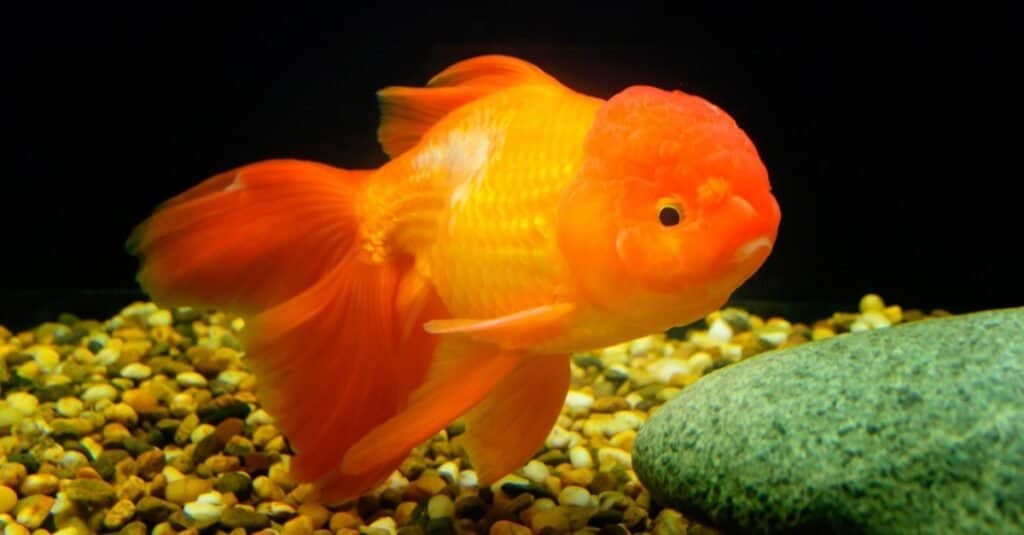
Goldfish can keep growing as long as their environment lets them.
©iStock.com/Foto_by_M
A relatively small member of the carp family, goldfish can reach immense sizes if given the opportunity. Everyone who ever owned a goldfish probably knows that the only thing that limit’s a goldfish’s growth is its container. If kept in a small aquarium, goldfish typically only grow to 1 to 2 inches long. However, when raised in large tanks or ponds, goldish can reach sizes between 15 and 19 inches long. While most goldfish live between 10 to 15 years, some can live over 40 years, which extended their growth potential. In addition to changing sizes, goldfish can also change colors. If left in a dark space, they will slowly change from an orangish-red color to gray or white. This happens because the pigments in a goldfish’s cells reflect light and give it color. When kept from light, their skin changes over time and eventually loses coloration.
#8: Green Anaconda
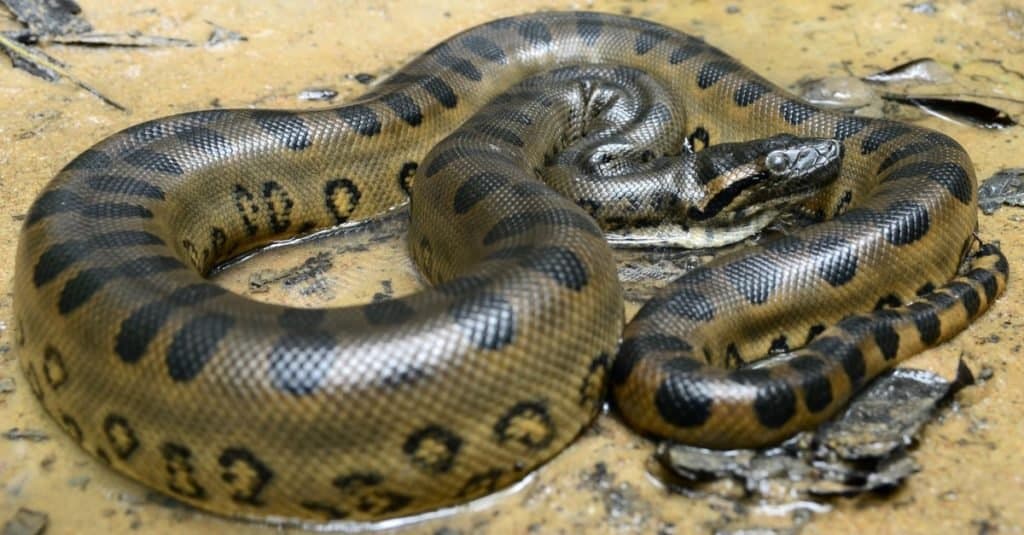
Green anaconda can grow up to 215 pounds and measure 17.1 feet long.
©Patrick K. Campbell/Shutterstock.com
Many snake species are included in the number of animals that never stop growing. While they grow quickly until they reach maturity, their growth never ceases, but simply slows down considerably. For example, anacondas, or water boas, can grow to exceptional sizes. In particular, the green anaconda poses amazing growth potential, and it currently ranks as the heaviest snake species and second-longest behind the reticulated python. The largest green anaconda ever recorded measured 17.1 feet long and weighed close to 215 pounds. That said, every once in a wild reports circulate that posit the existence of giant anacondas living deep in the Amazon. These reports make claims about anacondas measuring 35 to 40 feet long, and while technically plausible, these speculations should always be taken with a grain of salt.
#7: Kangaroo
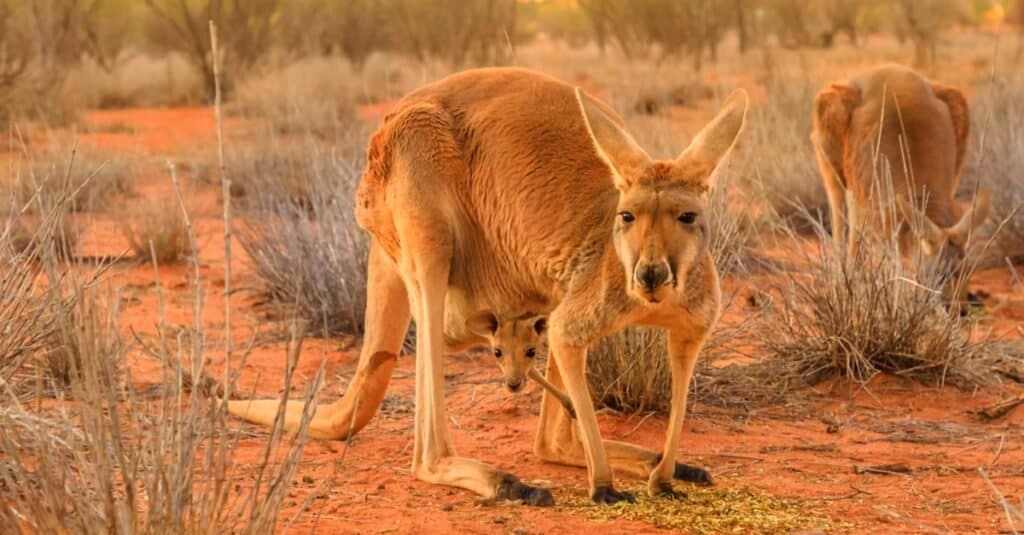
Kangaroos grow from a few inches long at birth to up to 6 and a half feet tall.
©Benny Marty/Shutterstock.com
Very few mammals are included in the list of animals that never stop growing. However, kangaroos rank among the few that do. In particular, red kangaroos can reach impressive sizes if left alone. The largest living marsupials in the world, red kangaroos can stand up to 6 feet, seven inches tall, and weigh over 200 pounds. Due to their immense sizes, they also go by the informal nickname “Big Reds” amongst Australians. Given that kangaroo babies or joeys measure only 1 inch long at birth, it’s incredible that they can grow into such tall and powerful creatures. Unlike humans, their skeletons grow slowly throughout their lives, so it’s possible that some kangaroos could grow even bigger than the largest specimens on record.
#6: King Crab
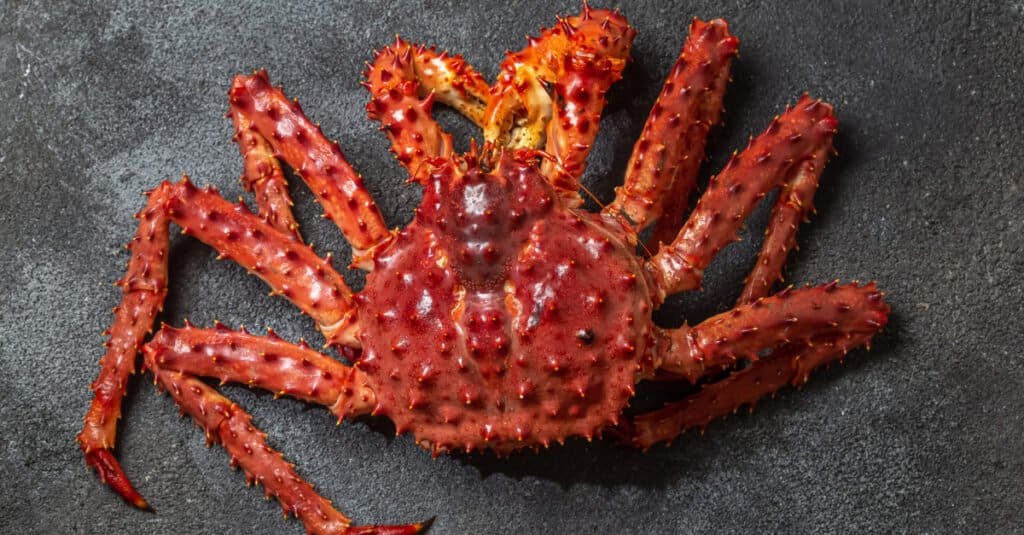
King crabs can live up to 30 years in the wild.
©Larisa Blinova/Shutterstock.com
Like lobsters, crabs also never stop growing. In particular, king crabs can reach enormous sizes so long as they aren’t caught or killed. Originally derived from hermit crabs, more than 121 known species of king crab currently exist. The largest species, the red king crab, can grow a carapace up to 11 inches long and a leg span of 5.9 feet. As for weight, especially heavy crabs can reach up to 28 pounds. They can live for up to 30 years in the wild, although they rarely live that long due to dangers from predators and the fishing industry. To reach their full size, king crabs must continuously molt and grow a new, more spacious exoskeleton. Given that they can continue to grow so long they have enough energy to molt, crabs possess the potential to grow indefinitely.
#5: Crocodile
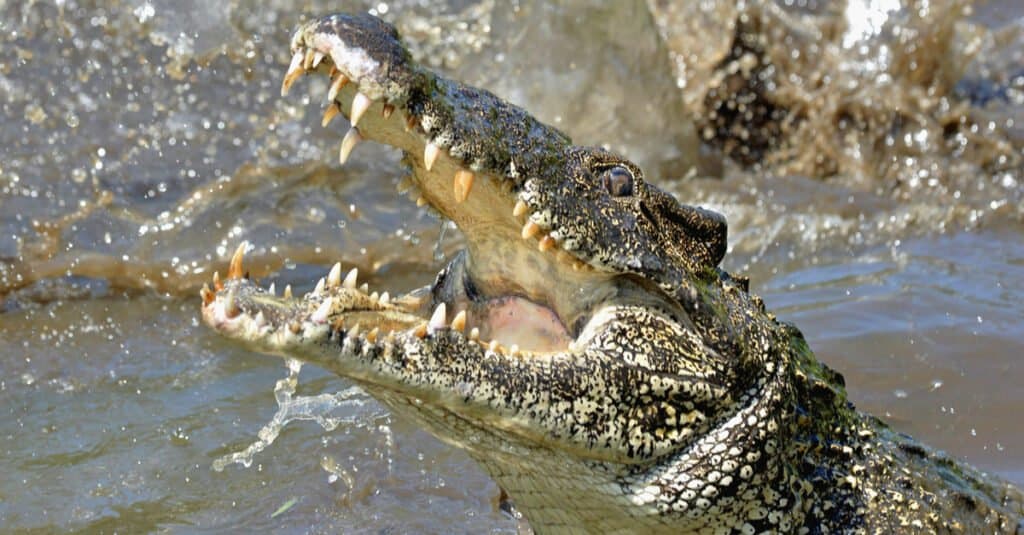
Crocodiles can live up to 100 years old and grow throughout their lives.
©Sergey Uryadnikov/Shutterstock.com
Crocodiles vary in size, from the medium-sized dwarf crocodile to the humongous saltwater crocodile. The largest crocodile species and living reptiles, saltwater crocodiles can grow to enormous sizes. Lolong, the largest officially measured crocodile, measured 20 feet, 3 inches long, and weighed 2,370 pounds. Currently, the biggest crocodile in the world, Cassius, measured 17 feet, 3 inches long. Crocodiles also possess extremely long lifespans, so the longer they live the bigger they can grow. For example, Cassius is estimated to be around 100 years old. With such long lifespans, there’s no telling how big a crocodile could grow in the right conditions. However, scientists estimate they could reach around 23 feet long if they live long enough.
#4: Python
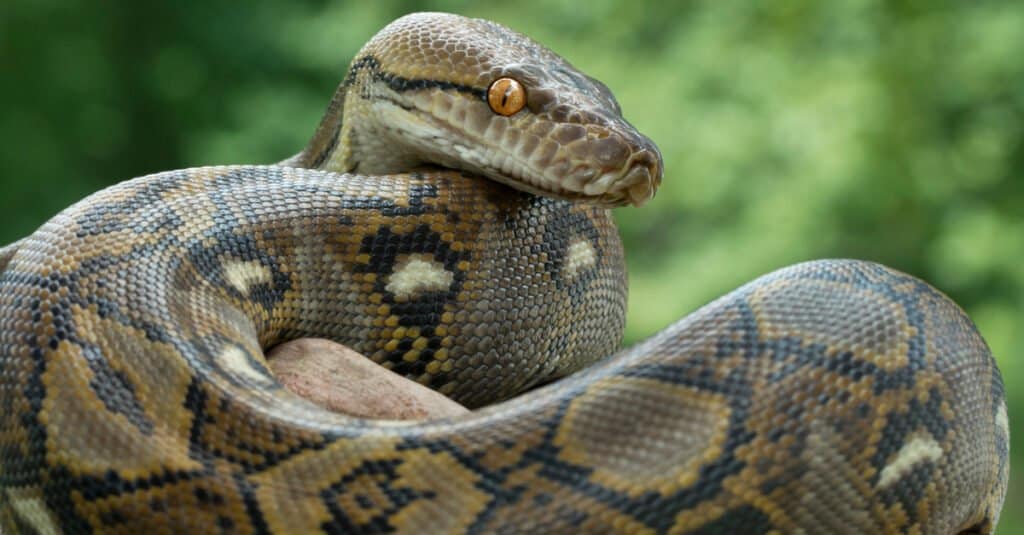
The reticulated python will molt its entire life, starting as soon as it’s hatched.
©Mark_Kostich/Shutterstock.com
Like anacondas, pythons are also animals that never stop growing. Of the many species that live throughout Asia, the two largest are the Burmese python and the reticulated python. On average, only green anacondas weigh more than Burmese pythons, while most scientists call the reticulated python the longest snake in the world. Medusa, the longest living snake ever officially recorded, measures 25 feet, 2 inches long, and weighs around 350 pounds. Reticulated pythons shed their skin throughout their life, and every time they molt they can grow a little larger. While they only live 12 to 20 years on average, they still manage to grow insanely long during that short time.
#3: Shark
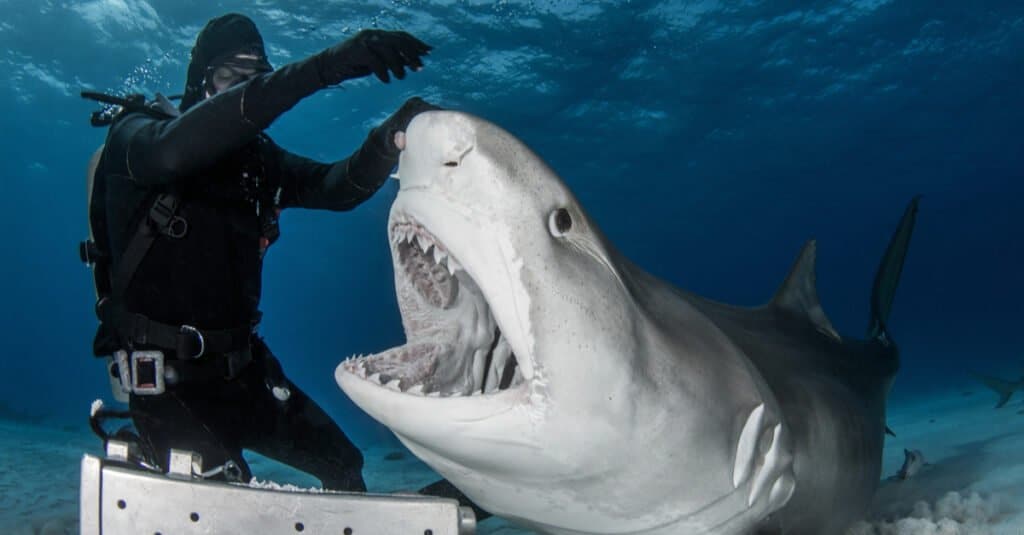
Sharks never stop growing, and will also continuously grow teeth throughout their lives.
©Tomas Kotouc/Shutterstock.com
The largest shark species of all time, Megalodon, reached up to 67 feet long and weighed around 65,000 pounds at its heaviest. Although extant sharks species don’t get quite this big, massive sharks continue to fascinate scientists and the general public. Sharks never stop growing and will continue to expand as long as their environment allows them. The largest fish in the sea, the whale shark, can measure up to 40 feet long and weigh 60 tons. While few survive to reach adulthood, those that do can live exceptionally long lives, with some scientists estimating they can live up to 150 years old. Meanwhile other well-known species like the great white also never stop growing, and not just their bodies. They constantly grow new teeth and may produce over 20,000 teeth over the course of their lives.
#2: Elephant
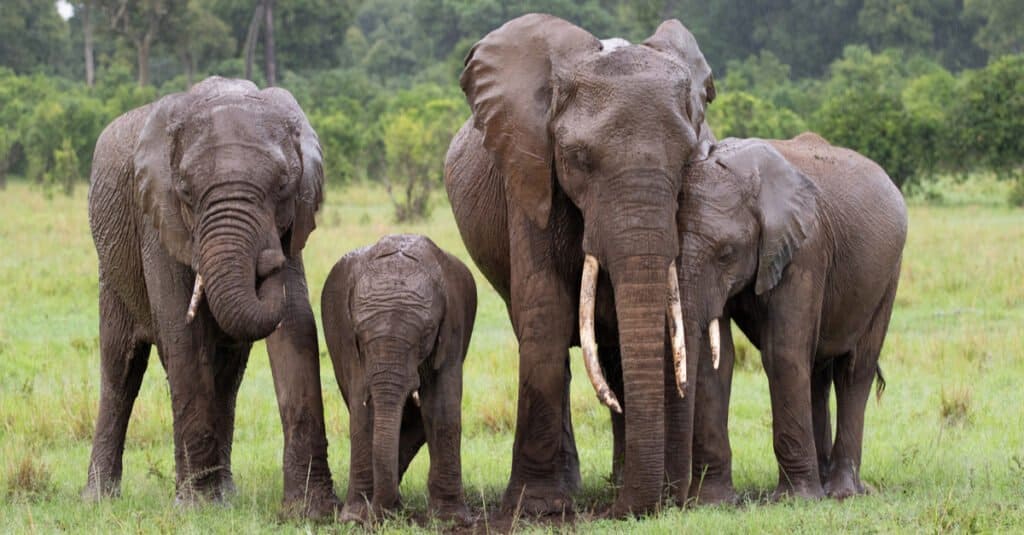
Male elephants never stop growing and can live up to 70 years in the wild.
©Neil Tyers/Shutterstock.com
Elephants are highly regarded for their intelligence, strength, and advanced social skills. In addition, elephants also claim the top spot in the ranking of largest living land animal. Given their huge size, it’s no wonder that they also fund a spot on our list of animals that never stop growing. While indeterminate growth in elephants remains hotly debate, evidence suggests that male elephants never stop growing and that their growth rate merely declines over time. With a lifespan of up to 70 years in the wild, and even longer in captivity, elephants get plenty of time to grow. The largest elephant on record, a male African elephant, weighed 24,000 pounds and stood 13 feet tall at the shoulder.
#1: Rougheye Rockfish
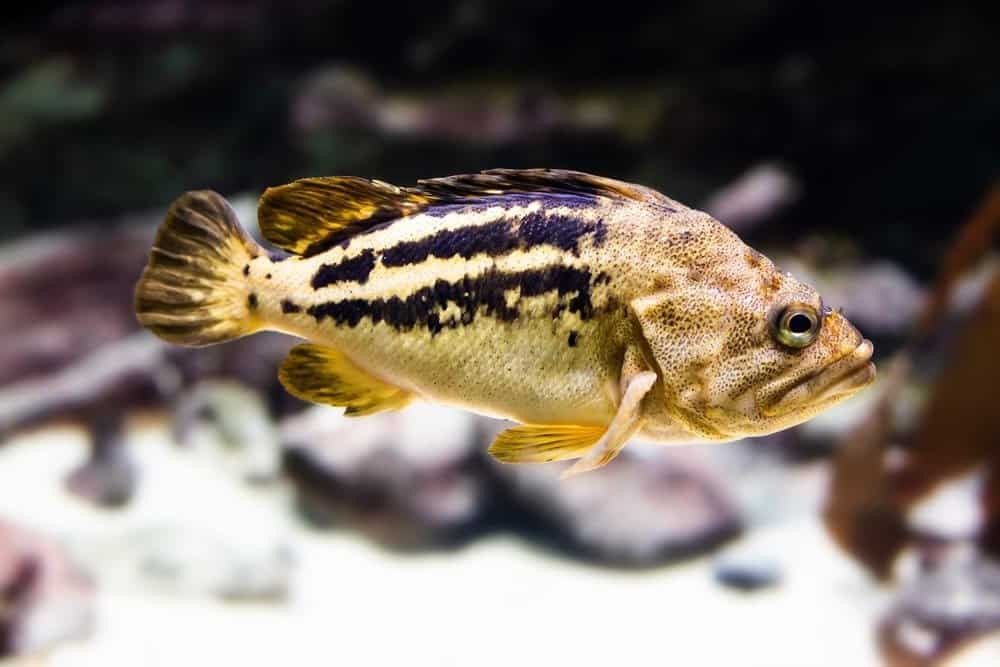
©Besjunior/Shutterstock.com
Also known as the blackthroat or blacktip rockfish, rougheye rockfish belong to the rockfish family. These spiny fish can live exceptionally long, and never stop growing until they die. At their oldest, they can live up to 205 years. Since most rougheye rockfish don’t sexually mature until they reach 20 to 27 years old, it makes sense that they also spend a long time growing. While blessed with long lifespans, few survive to die of old age thanks to the threats they face from predators and fishers. Still, those that do make it can grow up to 38 inches long, and weigh up to 40 pounds. The largest and oldest specimens live in deeper water, where they like to spend their time near the seabed full of caves and crevices.
The photo featured at the top of this post is © Opayaza12/Shutterstock.com
Thank you for reading! Have some feedback for us? Contact the AZ Animals editorial team.






